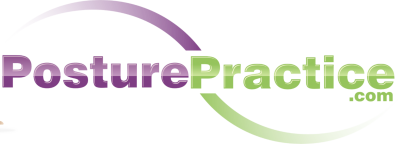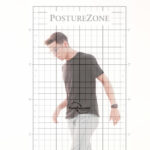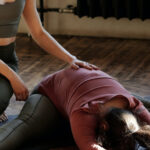Training Postural Control: Where Structure Meets Function
Training Postural Control
Where Structure Meets Function
Posture fascinates me – it’s the connection between structure and function. I love observing how the subtle asymmetries of carriage and gait cascade into functionally compensatory motions and then to structural adaptations of muscle, ligament, nerve and even bone.
I’ve helped thousands of patients with an adjustment, a passive intervention (from their perspective) intended to address asymmetries, remove deep fascial restrictions to symmetric motion and normalize neurologic feedback loops. My frustration in practice was seeing my patients return with similar patterns of asymmetry.
Rehab exercise is the obvious beginning to help people help themselves – and it can work. However, especially when focused on the injured part, the standard rehab protocols used in many DC and PT practices often seemed to reinforce previously learned patterns.
A 3,000 year old insight from Yoga
The key to changing patterns of motion is to focus attention on the control of that motion. My experience is that therapeutically this concept is even more powerful once restrictions are removed when motion is restored with appropriate adjustment of the spine, extremities and soft tissue release.
Exercise using this kind of attentional focus is called Motor Control Exercise (MCE), aka Motion Control Exercise. Examples of MCEs including Yoga as well as Pilates, Tai-chi and the StrongPosture® exercise protocols we teach. All share the goal of improving and strengthening posture and balance. And all do so by focusing attention to train fine control.
The Challenge? Having a framework.
The ongoing lifestyle commitment of a Yoga or Tai chi practice means you have the opportunity to focus on one thing this week and then something different next week. However, this kind of random choice of focus doesn’t work well for a clinical issue.
You can only focus on one thing at a time. And the more you focus, the smaller the field of attention becomes.
Clinically addressing the rehab of low back and other biomechanical issues from a postural perspective means having a framework.
The big elephant in the NMS room is low back pain, and to the world at large that’s been chiropractic’s arena. SMT, the profession’s historic therapeutic intervention, targets restoration of tightly focused motion to a single link in the kinetic chain, spinal or extremity. Muscle therapy removes restrictions to motion in soft tissue and fascia. The StrongPosture® protocols systematically sequences attentional focus on motion to these links, restraining coupling by PostureZone®, along tracks targeting the three elements of posture: balance, alignment and motion.
Here’s the essence of what I’ve taught doctors and therapists over the past 12 years: Focusing attention on one link in the kinetic chain at a time can retrain fine control and align subjective perception of body position with objective reality through biofeedback. In other words, reducing errors between perception and motion, or correcting sensori-motor errors.





















